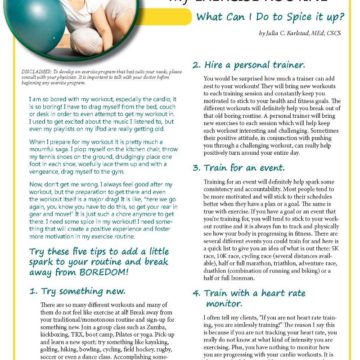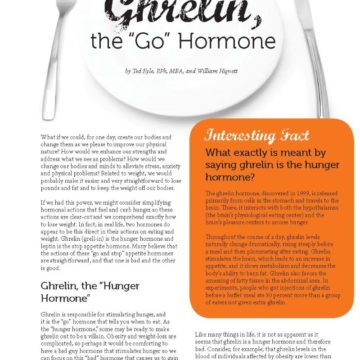Every Move You Make, Every Step You Take: How Activity Monitoring is Changing the World of Fitness and Weight-loss


by Gwyn Cready, MBA, and Ted Kyle, RPh, MBA
Winter 2012
Think about how many times you scan the dashboard as you drive, making subtle changes in your speed, your gear and even your destination. Now, imagine if you had the same insight into your body. Technology in the world of fitness and weight management is changing almost as rapidly as the world of computers and smartphones. New accelerometers and multi-sensor body monitors are giving people unprecedented insight into their activity profiles and sleep, and users are finding out that what they know really can make a difference.
The Rise of Activity Monitoring
Until a few decades ago, the biggest inroad technology had made into fitness and weight management was a pedometer. Pedometers, which have been around since the eighteenth century, measure steps and distance an individual takes. Studies have shown that even this most simplistic dashboard can provide insights that change behavior.
Unfortunately, the accuracy of pedometers can be off, sometimes significantly. Even a little bit of inaccuracy can hurt the ability to manage your weight and fitness, especially when the error is compounded over time.
Heart rate monitors made their debut as part of the training tools of the Finnish National Cross Country Ski Team in 1977. Heart rate monitors measure beats per minute, helping gauge the intensity of an activity. The use of heart rate monitors helped usher in the concept of “intensity training,” but the monitors have limited use outside of measuring short bursts of intense activity.
More recently, accelerometers, such as Fitbit® and Gruve®, took fitness and weight management technology a step further. Accelerometers track steps taken, distance traveled and calories burned, and are more accurate than pedometers, but still are not the most accurate devices on the market. Accelerometers can have difficulty picking up calories burned during times of low movement, such as when a person is lifting weights, watching television or sleeping. In fact, sometimes accelerometers can be “tricked” and count movement and motion that you aren’t doing yourself, such as riding in a car.
Multi-sensor Body Monitors
More sophisticated body monitors, called multi-sensor body monitors, go beyond accelerometers. Multi-sensor body monitors, such as BodyMedia FIT™ and bodybugg®, combine temperature sensors that measure your skin and how much heat is coming off your body. They also have galvanic skin response (sweat) sensors along with a built-in accelerometer to measure not only movement, but the intensity of an activity, which means they can give you a complete profile of energy expenditure.
Understanding the intensity of the activity is critical in accurately capturing calorie burn. A pedometer can track 1,000 steps, but only a multi-sensor body monitor can detect the difference in caloric burn between 1,000 steps on a flat surface and 1,000 steps on a hill. By starting with an accurate base of how many calories you burn, you can alter your calorie intake to achieve the appropriate calorie balance to maintain or lose weight. Multi-sensor body monitors offer the highest level of information and accuracy in the market.
For a complete calories in/calories out overview, accelerometers and multi-sensor body monitors allow you to enter the foods you have eaten into a Web-based software system. With a multi-sensor body monitor, you can also log foods on the go and view your activity profile using an iPhone® or Android™ mobile device. This near real-time tracking can make managing your fitness almost addictive.
Multi-sensor body monitors also track the quality and quantity of your sleep. Getting good sleep — sleep unbroken by periods of wakefulness — and getting enough sleep are important in suppressing appetite and maintaining energy levels. Clinical evidence is beginning to reveal the important role sleep plays in overall wellness, fitness and effective weight-loss.
Why Track at All?
We all know that if you consume more calories than you burn, you will gain weight and if you burn more than you consume, you will lose weight; but studies have shown that the more people monitor themselves (steps taken, food eaten, calories burned, minutes of activity, etc.), the more likely they are to become engaged in the effort to stay active, lose weight and maintain a healthy lifestyle. Engagement means you are more likely to persist in the effort. In the world of fitness and weight management, a little knowledge can be a very compelling and motivating thing.
What the Future Holds
What will the world of fitness and weight-loss technology look like a year from now, or even five? BodyMedia FIT offers an add-on feature called ProConnect™. If your doctor or fitness coach participates in ProConnect™, you will be able to share your information with them safely online. In return, they will be able to monitor your fitness progress and provide encouragement and support. Other weight management technology companies are looking to add blood sugar tracking to their monitors. This would be a huge benefit to people with diabetes or pre-diabetes, and it would make people at risk more aware of the impact their food and activity choices have on their overall health.
Some companies are taking a path that may intersect with gaming consoles like the Nintendo Wii® or Kinect for Xbox 360®. This would create activities people can do in front of the television using a body monitor to transmit the participant’s movement to those of an avatar onscreen, while also showing a running total of calories burned. The hope is that this will improve participant compliance by building higher engagement and help remind people that exercise and body monitoring can be fun. Still, other companies are beginning to combine social media and body monitoring by allowing the consumer-driven sharing of monitor data and encouraging the creation of online fitness and weight-loss social groups, distance coaching and online challenges.
Whatever the future holds, companies and consumers have made it clear – accurate tracking of activity, sleep and food eaten is going to continue to play an important role in weight management.
About the Authors:
Gwyn Cready, MBA, is a communications consultant with more than 20 years of healthcare policy and brand marketing expertise, as well as an award-winning romance novelist.
Ted Kyle, RPh, MBA, is a pharmacist and health marketing expert and is also a member of the OAC National Board of Directors.
by Yelena Kibasova Spring 2024 The fitness world is evolving, with new trends and innovations that promise…
Read Articleby Zack Lucks, NASM-CPT, EMT Winter 2024 Working out with a loved one is a great way…
Read Articleby Nina Crowley, PhD, RD (with Inspiration from Shawn Cochran) Winter 2024 Dating, no matter your age,…
Read Article









